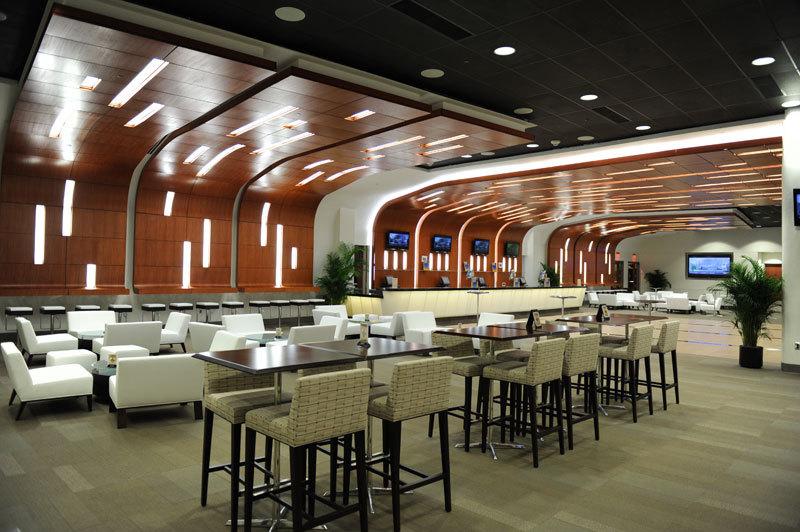
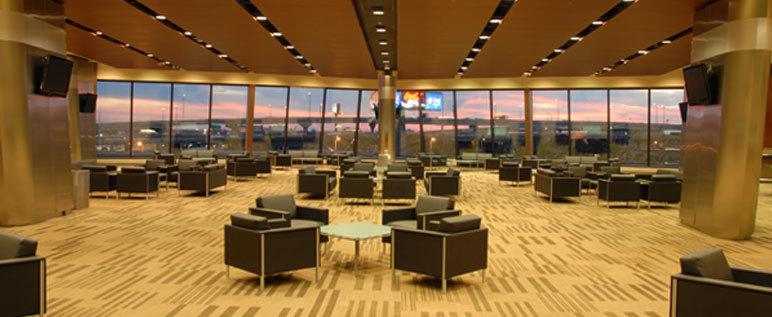
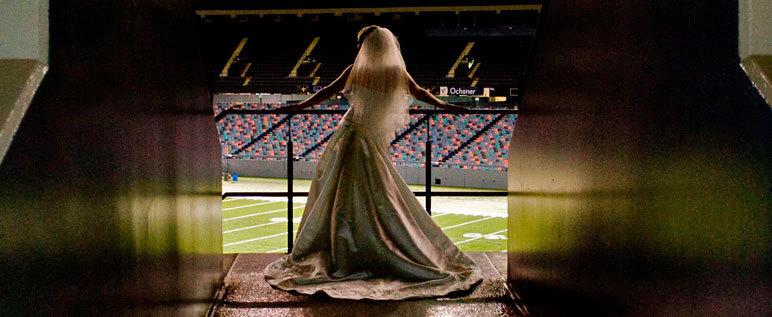
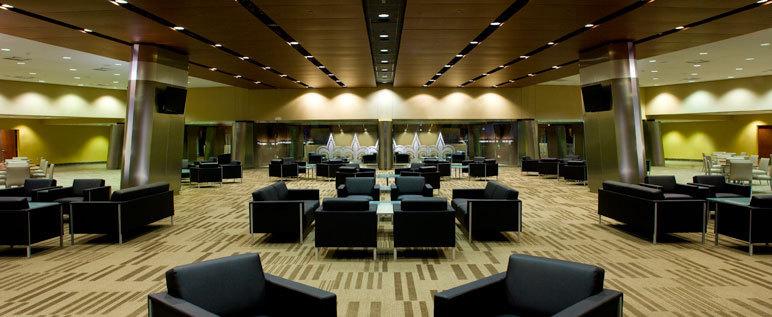
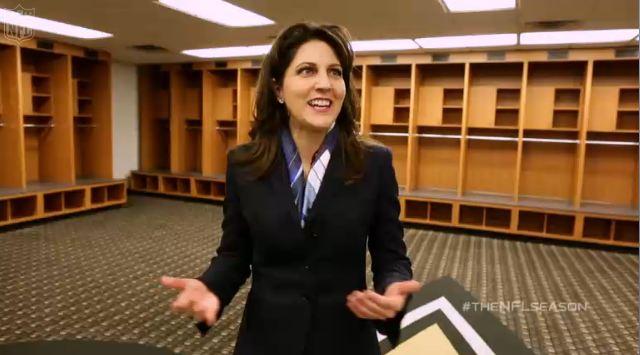
Super Bowl 2013 fans will find a fully remodeled Superdome. The symbol of Hurricane Katrina's destruction is now a point of New Orleans' pride, reskinned, re-lit, and packed with wood-paneled party venues in a $365 million project.
The major work was completed for a 2006 reopening. But more work was done on event rooms, wth $85 million spent since 2010.
Newly remodeled event rooms - aimed at weddings, receptions and business gatherings - include Encore at club XLIV, which opened for today's Super Bowl XLVII. After it will remain as a permanent addition to club XLIV, expanding the venue by 8,477 square feet.
Four new bars and additional points of sale have been added to the Superdome's 600 Level (Terrace), and existing concessions stands have been completely upgraded. Bunker Clubs, with wood paneled ceilings that flow onto the walls and measuring 7,000 square feet, are also part of the renovated Superdome.
“What visitors now see in the Superdome is major, transformational change,” SMG Senior Vice President Doug Thornton says. “After Katrina, we had a strategic vision to recreate the building into an ultra-modern stadium that would accomplish numerous objectives, including re-igniting a major economic engine, securing the Saints long-term, and returning an icon to the New Orleans skyline.”
When Katrina ravaged New Orleans on Aug. 29, 2005, an estimated 25,000 to 30,000 people sought protection inside the Superdome. The stadium served as a refuge of last resort for those who had no means of leaving during a mandatory evacuation of the city. If not for the Superdome many of them might have perished in the frightening conditions outside. The wind ripped open holes in the Superdome’s roof and water poured inside, causing massive damage.
The stadium remains the home of the New Orleans Saints and Tulane Green Wave football programs, the annual Allstate Sugar Bowl, New Orleans Bowl and Bayou Classic, the Essence Festival (the largest African-American music festival in the world), and many other annual events. In recent years it has also hosted the 2012 BCS Championship, and the 2012 NCAA Men’s Final Four.
The multi-phase project cost a total of $336 million, of which $156 million came from FEMA.
“From the beginning, we’ve had a great team who planned strategically and worked hard and fast.” Thornton says. “The work was completed on time and under budget, and since reopening in 2006, we’ve had no interruption in events, business has been excellent, and we’re adding more events every day. It has proven to be a great return on investment for the public.”
Since the Superdome reopened in 2006, the events held at the facility have had a total fiscal impact of $4.1 billion on the Louisiana economy, according to a study by the University of New Orleans’s Division of Business Economic Research. By 2025, the end of the current Saints lease, every dollar spent on Superdome repairs and enhancements will return $58 to the state.






Have something to say? Share your thoughts with us in the comments below.